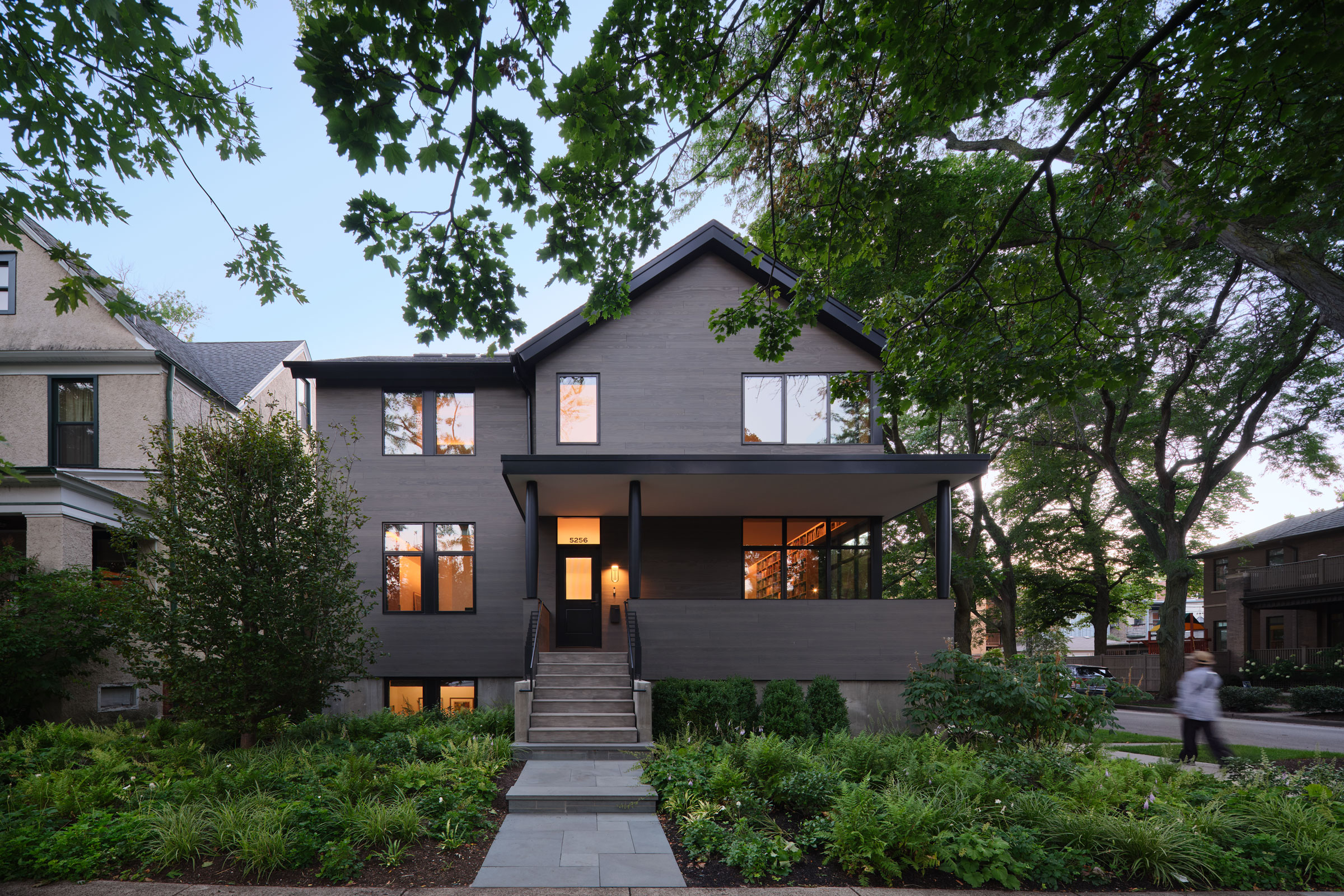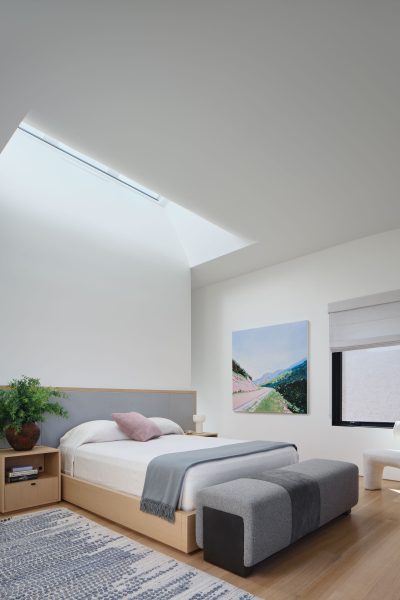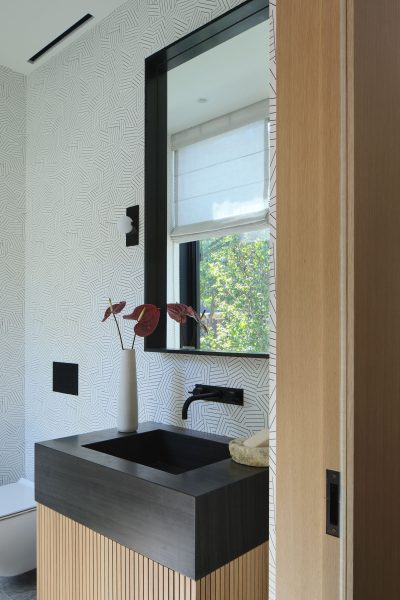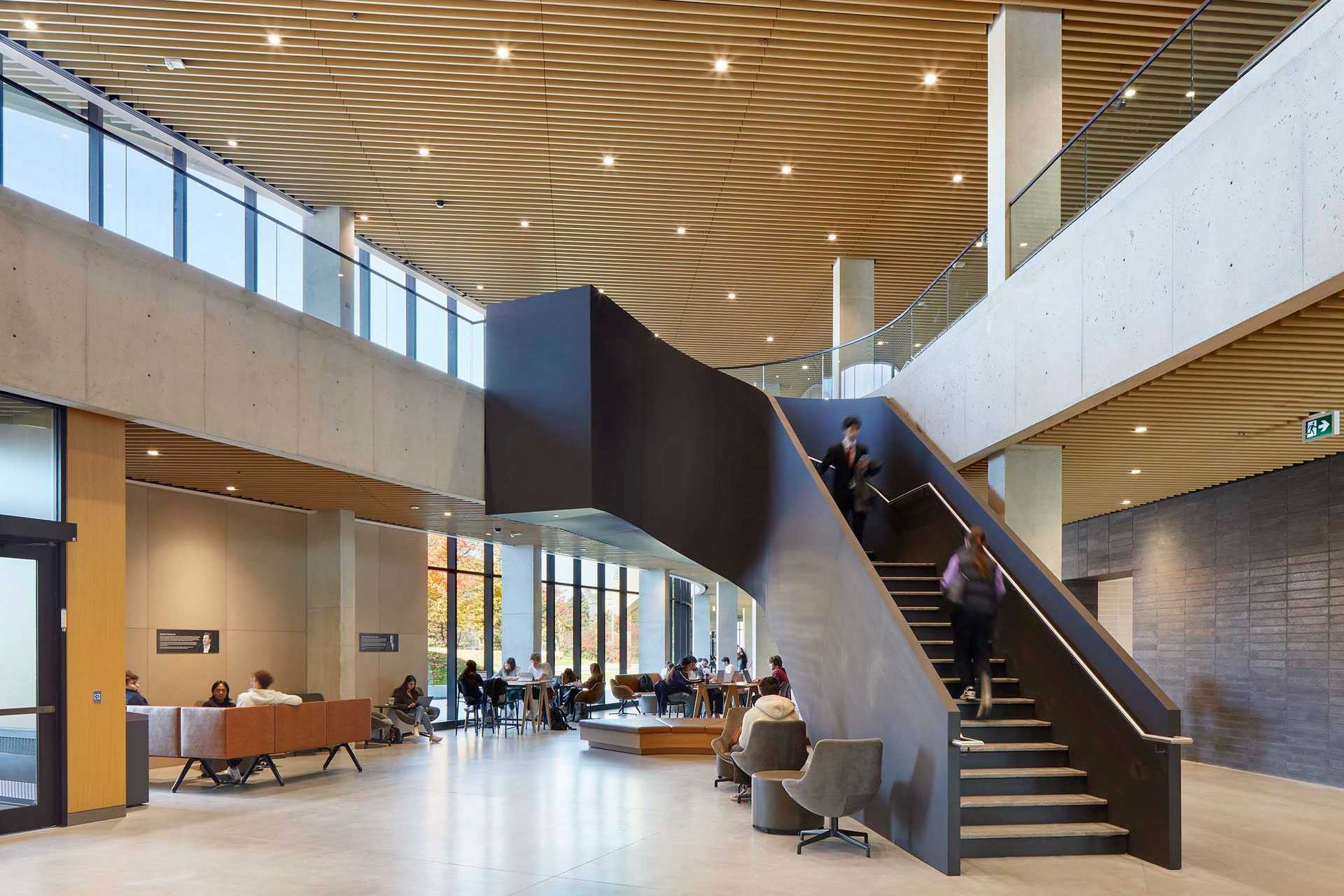Story at a glance:
- The project demonstrates how contemporary, sustainable design can respect the character of a historic neighborhood.
- The design prioritizes human-nature connections at every level, from material choice to multi-level landscaping.
- The home achieves high performance through careful material selection and innovative technologies, including low-carbon concrete.
In Chicago’s historic Lakewood Balmoral district, a new custom residence demonstrates how sustainable, contemporary design can be thoughtfully integrated into a traditional, historic neighborhood. The home, designed by Wheeler Kearns Architects, maintains a quiet street presence while incorporating cutting-edge performance features that create a bright, adaptable living space for a young family.
“The client wanted to build something that was respectful of the historic community they liked,” says Dan Wheeler, founding principal at Wheeler Kearns. “But they also wanted to make sure they had sufficient daylight and natural landscaping. Those were their key drivers.”
The project, completed in 2023, replaced an aging two-story rental building on a double corner lot. The design team faced the challenge of creating a contemporary home that would complement the district’s historic character while meeting the clients’ desires for a clean, minimal aesthetic.
“They wanted it to be quiet from the outside and respectful of the context, and then more contemporary and clean and open on the inside,” explains Thomas Boyster, project architect. The solution involved carefully considered traditional forms—including a gabled roof and front porch that pay homage to the style of nearby homes—executed with refined modern detailing.
Design for the Environment
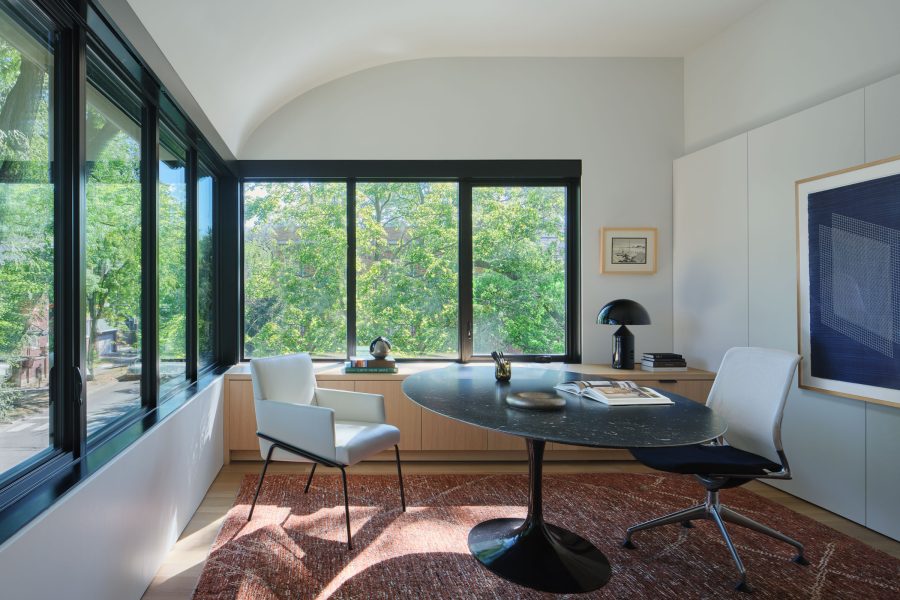
The curved ceiling on the top floor of the home draws its inspiration from elements found in nature and helps to draw more natural daylight into the lofty interior spaces. Photo by Steve Hall, courtesy of Wheeler Kearns Architects
The client not only wanted to respond to the surrounding neighbors but also build a relationship to the natural environment in a district filled with mature trees that form a lush urban canopy. In response, the home’s design embraces biophilic principles throughout, creating deep connections between indoor and outdoor spaces.
“It was pretty clear that they were interested in a biophilic approach to the building and having lots of natural materials,” Boyster says. “But also the connection to nature directly—not just the visual. They mentioned wanting the sounds of nature accessible, and having the shifting patterns of light.”
This philosophy influenced everything from material choices to the multi-level landscape design, which terraces down from the main living space to create a varied garden experience. The design team, including Boyster, who was completing a master’s in biomimicry at the time, incorporated nature-inspired elements like curved ceiling transitions on the top floor, which echoes organic forms and creates a softer, loftier, and brighter experience as you move up through the home.
“When you have a bunch of functional parts, nature fits them together with smooth curves and brings things in. It shapes surfaces to catch light,” Boyster says. Even the basement level was designed to maintain this connection, with carefully planned terracing bringing natural light and garden views into what would traditionally be darker spaces.
Inspiring Interiors
- Photo by Steve Hall, courtesy of Wheeler Kearns Architects
- Photo by Steve Hall, courtesy of Wheeler Kearns Architects
The home’s interior also reflects the client’s desire for clean, uncluttered spaces that prioritize not only natural light but also functionality. “For one of the clients, the heart and soul of the house is the library,” Wheeler says, noting how this key space was positioned at the home’s prominent corner to engage with the community while maintaining tranquility.
The kitchen exemplifies the minimalist approach, deliberately designed to avoid reading as a traditional kitchen; with no upper cabinets or oven hood, it integrates seamlessly into the public spaces.
The home’s sustainability features were integrated into the design from the start, with particular attention paid to the building envelope. “We wanted to have a well-insulated thermal shell,” Wheeler says. “The clients were supportive of using triple-pane glass, which is oftentimes value-engineered out of a project.”
More Sustainable Details
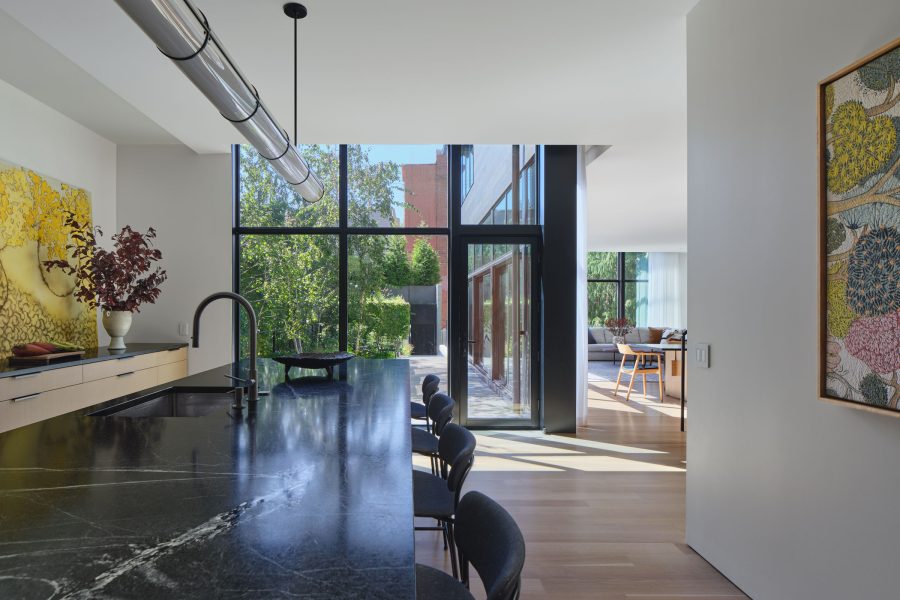
The kitchen was designed not to read as a traditional kitchen but to blend into the common areas of the home, with no upper cabinetry or oven hood. Photo by Steve Hall, courtesy of Wheeler Kearns Architects
The team selected a wood-framing system with HFO closed-cell spray insulation and an exterior rainscreen of Accoya wood, finished by Delta Millworks. “We ran an embodied carbon comparison of wall assembly approaches,” Boyster says. “The multifunctionality of the spray insulation, especially using HFO instead of HFC for significantly lower global warming potential, offset by primarily biogenic carbon sequestering materials, found the appropriate balance.”
The concrete work, too, reflected this commitment to sustainability. The team used Ozinga low-carbon concrete throughout, incorporating fly ash as a partial cement replacement and a CarbonCure additive that mineralizes waste CO2 into the mix. “Much of the concrete was left exposed at the facade, reducing material use and highlighting the distinct appearance of the special mix,” Wheeler says.
The landscape design of native plants and trees further connects the home to its environment while managing stormwater naturally. The columnar trees along the south property line represent the wall of the exterior room and provide a visual screen, privacy, and great fall color. “Colors of plants throughout the garden were chosen to blend with the color of the building materials, creating visual harmony,” says Mimi McKay, owner of McKay Landscape Architects.
“One of the unique things about their program was that they only had one car, even though it’s zoned for two parking spaces,” Wheeler says. “That created a unique challenge in terms of how we handle incorporating the garage into the landscape.” This resulted in a green-roofed garage that disappeared into the garden design. The evergreens adorning the top of the garage achieve similar results to other trees onsite but with year-round greenery.
Overall the project demonstrates how sustainable design can enhance rather than compromise historic character. “If a building has a contributing nature to the community beyond just the internal expression of it, it is going to be maintained,” Wheeler says. “People are going to love it.”
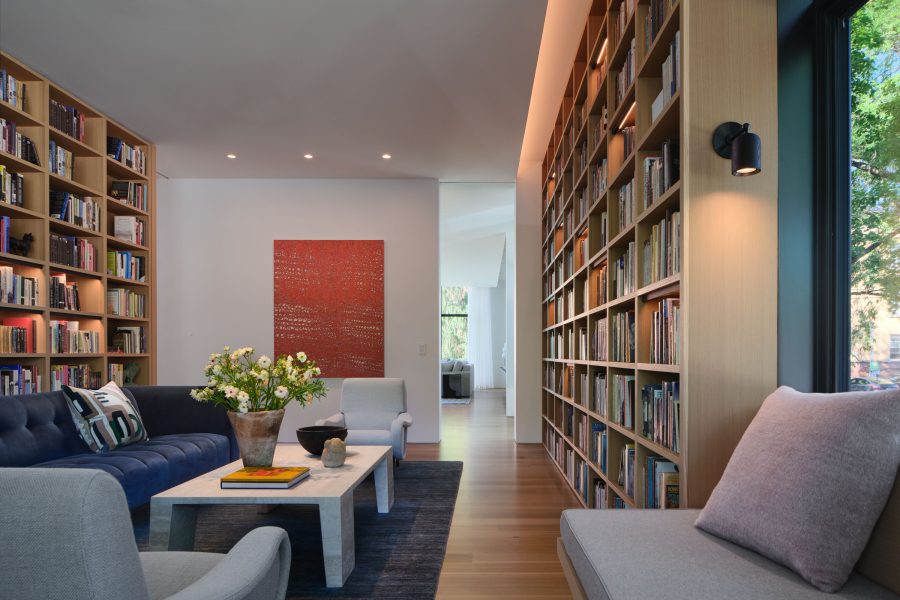
The library is a critical piece of the client’s vision for the home, offering a tranquil interior space that offers sweeping views of the surrounding community. Photo by Steve Hall, courtesy of Wheeler Kearns Architects

